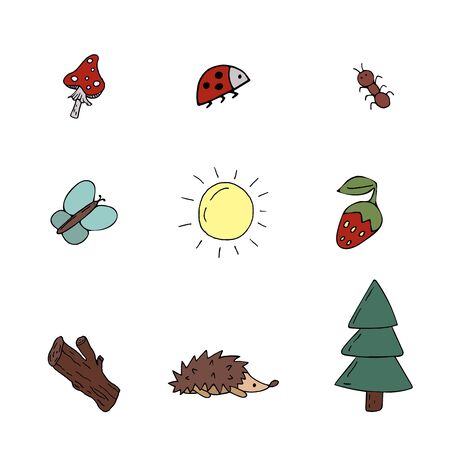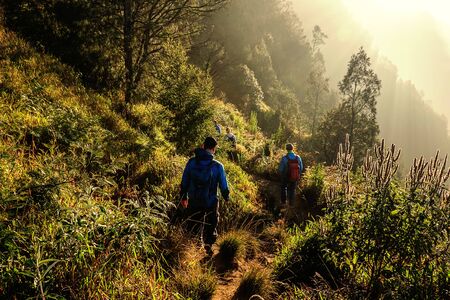Introduction to British Woodland Adventures
Imagine stepping beneath a canopy of emerald leaves, where the soft dappled sunlight dances on the mossy floor and birdsong fills the air. British woodlands are enchanting places, brimming with life and gentle mystery—a perfect setting for family explorations. These ancient forests weave together centuries of history with an ever-changing display of native flora, inviting young and old alike to become botanical explorers. As you wander along winding paths, you’ll discover carpets of bluebells in spring, foxgloves standing tall in summer, and the earthy aroma of fallen leaves in autumn. Each season paints the woodland with its own palette, offering fresh wonders to uncover—delicate ferns unfurling in the undergrowth, clusters of wild garlic scenting the breeze, or the bright red berries of holly peeking through winter’s quiet hush. Setting out on a woodland walk is more than just a stroll—it’s an invitation to connect with nature, foster curiosity, and create cherished memories together as a family. The British countryside awaits, ready to reveal its botanical secrets beneath every branch and leaf.
Preparing for Your Woodland Wander
Before setting out on your botanical adventure through Britain’s enchanting woodlands, a touch of planning ensures your family stroll is both joyful and effortless. The right preparation not only keeps everyone comfortable, but also helps foster respect for the treasured countryside that awaits.
The Essentials: What to Wear and Bring
British weather is famously unpredictable, so dressing in layers and choosing sturdy footwear is key. Wellies are a classic choice, perfect for muddy paths and hidden puddles. A waterproof jacket tucked into your bag can be a lifesaver if the clouds suddenly roll in. Little explorers might enjoy wearing a soft woolly hat or their favourite scarf as they wander beneath ancient oaks and birches.
| Item | Why Its Useful |
|---|---|
| Wellies or walking boots | Protects feet from mud, water, and uneven ground |
| Layered clothing | Keeps you warm or cool as the weather shifts |
| Waterproofs | Essential for sudden rain showers |
| Picnic hamper & blanket | Makes snack time comfortable amidst nature |
| Pocket guide to British flora | Helps identify wildflowers and trees along the way |
| Reusable water bottles & snacks | Keeps everyone energised and hydrated |
| Binoculars or magnifying glass | Sparks curiosity about plants and woodland life |
Packing Your Picnic: A Taste of Tradition
No British woodland walk is truly complete without a picnic. Fill your hamper with homemade sandwiches, crumbly flapjacks, seasonal fruit, and perhaps a flask of tea to warm chilly fingers. Remember to pack reusable containers and take all litter home—leaving nothing but footprints behind.
Navigating British Weather: Be Prepared for All Seasons
The charm of a woodland walk often lies in its unpredictability. One moment, dappled sunlight dances through leaves; the next, mist weaves between tree trunks. Always check the forecast before heading out, but embrace the elements—rain adds sparkle to ferns, while fog lends an air of mystery to familiar paths.
Countryside Etiquette: Respecting Nature’s Home
As guests in the countryside, it’s important to tread lightly. Stick to marked paths to protect delicate wildflowers and avoid disturbing wildlife. Close gates behind you, greet fellow walkers with a friendly nod or “good morning”, and keep dogs under control around livestock. This gentle respect preserves Britain’s natural beauty for generations of explorers yet to come.

3. Spotlight on British Flora: Stories Among the Trees
Step into a British woodland and you’ll find yourself surrounded by living stories—each tree and flower whispering its own tale from generations past. On your family walk, begin your sensory adventure under the gentle canopy of ancient oaks. With their gnarled limbs and acorn-scattered roots, oaks have long stood as symbols of strength and endurance in British folklore. According to legend, druids once gathered beneath these mighty trees, believing they held the wisdom of the land itself.
As spring unfurls, a carpet of bluebells often emerges, transforming the forest floor into a hazy sea of violet-blue. The sight is nothing short of enchanting, but listen closely—local tales warn that bluebell woods are home to fairy folk who might lead wanderers astray. Their sweet fragrance lingers in the air, mixing with birdsong, inviting you to pause and breathe in nature’s magic.
Venture further and you may spot foxgloves standing tall along sun-dappled paths. These striking wildflowers—adorned with bell-shaped blooms—are steeped in myth. Children delight in stories that foxes wore the flowers as gloves to sneak silently through the woods. Meanwhile, old wives’ tales speak of fairies teaching foxgloves to ring when danger approaches.
Each plant and tree holds more than just beauty; they are woven into Britain’s cultural tapestry. Touch the rough bark of an oak or brush against soft bluebell petals, and you connect not just with nature, but with centuries of storytelling—a living heritage that makes every woodland walk a journey through both landscape and legend.
4. Engaging Children with Nature’s Curiosities
There is something truly magical about watching children discover the wonders of the British woodlands. Every rustle in the undergrowth and fluttering leaf overhead becomes an invitation to ask questions, to touch, to wonder. By weaving creative activities into your family walks, you can nurture a lasting sense of curiosity and belonging in nature’s embrace.
Creative Woodland Activities for Young Explorers
To bring the botanical world alive for children, try incorporating hands-on experiences and playful learning along the trail. Here are some enchanting ideas:
| Activity | Description | British Twist |
|---|---|---|
| Leaf Rubbing | Place a sheet of paper over a fallen leaf, gently rub with a crayon to reveal its intricate veins and shape. | Spot iconic leaves such as oak, sycamore, or horse chestnut—perhaps even start a collection of native species! |
| Bark Spotting | Encourage children to notice the textures and patterns on different tree barks; match these to their tree names. | Compare the rough ridges of English oak to the smooth silver birch or patchy London plane. |
| Nature Story Crafting | Create short stories inspired by woodland discoveries—perhaps a squirrel’s adventure or a bluebell fairy tale. | Draw upon classic British folklore, weaving in references to local legends or well-loved tales like Robin Hood’s Sherwood Forest. |
Sparking Wonder at Every Turn
Children thrive when encouraged to look closer and imagine deeper. Pause beside a mossy log and count the shades of green; crouch low to spot tiny fungi peeking from leaf litter. Give each child a small notebook for sketches or pressed flowers—a keepsake of their personal journey through Britain’s wild spaces.
Fostering Curiosity Beyond the Trail
The magic need not end when boots are unlaced at home. Share findings over a cuppa, pressing favourite leaves into scrapbooks or researching new plant names together. In these gentle moments, children learn that exploring nature is not just an outing but an ongoing story—one that is rooted in every hedgerow and echoed in every birdsong they remember.
5. Seasonal Changes: Nature’s Ever-Shifting Canvas
British woodlands are living tapestries, constantly changing with the passing of each season—a delight for any budding botanical explorer. In spring, gentle carpets of bluebells and wild garlic emerge beneath awakening canopies, their scent and colour a sure sign that nature is stirring from her winter slumber. As days lengthen, the woods burst into life; oak, ash, and beech trees unfurl their fresh leaves, while birdsong weaves through the branches, echoing the promise of warmer days.
Summer brings dappled sunlight filtering through lush foliage, casting playful patterns onto mossy paths. Children can spot butterflies flitting among foxgloves and elderflowers or pause to watch squirrels foraging busily above. The air hums with activity—bees dance from blossom to blossom and dragonflies skim across tranquil woodland ponds.
As autumn arrives, the woodland transforms again. Leaves turn to golden hues—russet, amber, and ochre—rustling underfoot as families wander along winding trails. Hedgerows brim with berries and nuts, inviting you to observe blackbirds and hedgehogs preparing for the coming chill. Collecting conkers or crunching through leaves becomes a much-loved tradition, connecting young explorers to the rhythms of nature.
Winter in the British woodland may seem quiet at first glance, but there is magic here too. Bare branches reveal intricate silhouettes against crisp skies, while frost dusts holly and ivy with silvery sparkle. With a keen eye, children can spot animal tracks in the mud or snow and marvel at hardy fungi clinging to old tree trunks. Each visit offers something new—even in the stillness of winter, life stirs beneath the surface.
This ever-changing canvas encourages families to return throughout the year. By witnessing these seasonal cycles together, children develop a deep sense of connection with the natural world—a bond that grows stronger with every walk under Britain’s leafy boughs.
6. Sustainable Exploration: Leave No Trace
As you wander beneath the dappled canopy and tread softly on mossy paths, remember that being a true botanical explorer means cherishing the land as much as you learn from it. The British countryside is a living tapestry, stitched together by centuries of wildflowers, towering oaks, and secretive foxgloves. To ensure these natural wonders thrive for future generations, families can embrace a few simple but powerful principles of sustainability.
Pack It In, Pack It Out
One of the golden rules for woodland walks is to leave no trace. Carry reusable containers for snacks, take your litter home, and avoid disturbing natural features. Even small actions—like picking up stray wrappers or resisting the urge to pluck wildflowers—help preserve the delicate balance of these habitats.
Tread Lightly and Stick to Paths
Encourage little ones to stay on marked trails. This protects fragile ground flora and reduces soil erosion. If a muddy puddle or fallen log blocks your way, treat it as an opportunity for adventure while still respecting the set boundaries of the woodland path.
Respect Wildlife and Plants
The woods are home to countless creatures and rare plants. Observe quietly; watch a squirrel’s acrobatics or listen for songbirds without chasing or startling them. Teach children to admire flowers with their eyes rather than their hands, fostering respect for the life that flourishes here.
Share Stories and Stewardship
As you create memories among bluebells and bracken, weave in gentle reminders about caring for the countryside. Share stories about ancient trees or tales of local conservation heroes to inspire a sense of guardianship in young explorers. By nurturing both curiosity and responsibility, your family’s footprints will help shape a thriving landscape long after your walk has ended.


